Aree interne e centri minori per la competitività del territorio
Abstract
Il rilancio delle aree interne che passa per la rivitalizzazione di borghi e centri storici minori si scontra con un problema di fondo, ovvero la capacità di elaborare politiche pubbliche capaci di coniugare le aspettative di sviluppo del territorio, sfruttandone i vantaggi competitivi naturali, con la salvaguardia delle identità storico- culturale.
L’attenzione al territorio e il nuovo approccio place-based nell’ambito delle politiche europee ha posto l’accento sulla riscoperta e la valorizzazione delle Aree Interne. In Italia, dal 2014, si è messa in atto una propria Strategia al fine di ridurre concretamente il deficit democratico che sta investendo l’intera nazione.
Il principio di attuazione è stato quello di non lavorare su politiche uniformi calate dall’alto (one size fits all) ma di progettare gli interventi in una dimensione territoriale capace di “curvarvi” sulle specificità delle aree periferiche. Lo sviluppo di questi territori attraverso la presenza insediativa storica, locale e territoriale sarebbe perfettamente in linea con gli obiettivi della Strategia Europe 2030 per una crescita intelligente, sostenibile ed inclusiva. Il paper presenta una proposta di ricerca sui i borghi e centri minori calabresi quali punti focali per la riattivazione delle aree interne della regione. Il raffronto tra modelli già avviati in Italia e i progetti proposti dalla SRAI Calabria, ancora in fase di attuazione, è utile non soltanto a delineare i punti salienti della Strategia, ma è necessario per comprendere quali siano le difficoltà che si incontrano.
Inner Areas and Minor Historical Centers for the Competitiveness of the Territory
The recovery of the inner areas through the revitalization of minor historic centers is confronted with a fundamental problem: the ability to elaborate public policies able to combine the expectations of the development of the territory, exploiting its natural competitive advantages, with the preservation of historical and cultural identities.
The attention to the territory and the European policies with a new approach place-based has placed the accent on the rediscovery and the valorization of the Inner Areas. In Italy, since 2014, a strategy has been put in place to reduce the population decline.
The principle of implementation was not to work on uniform policies “one size fits all” but to design measures in a territorial dimension. The development of these territories through the presence of historical, local and territorial settlements would be perfectly in line with the goals of the Europe 2030 Strategy for smart, sustainable and inclusive growth. The paper is about a research proposal on the small villages and minor historical centers of Calabria as focal points for the reactivation of the inland areas of the region. The comparison between strategies already started in Italy and the projects proposed by SRAI Calabria, still being implemented, is useful to outline the highlights of the Strategy and it is necessary to understand what kind of difficulties are.
Parole chiave
Full Text
PDFDOI: https://doi.org/10.14633/AHR168
Refback
- Non ci sono refbacks, per ora.
Copyright (c) 2019 Natalina Carrà, Lucia Spanò

This work is licensed under a Creative Commons Attribution-NonCommercial 4.0 International License.
........................................................................................................................................................................................................................................................................................................................................................
ArcHistoR è una rivista open access e peer reviewed (double blind), di Storia dell’architettura e Restauro, pubblicata dall’Università Mediterranea di Reggio Calabria. La rivista ha cadenza semestrale. È una rivista di Classe A (ANVUR) per l’Area 08 - Ingegneria civile ed Architettura, settori C1, D1, E1, E2, F1.
Comitato scientifico internazionale
Maria Dolores Antigüedad del Castillo-Olivares (Universidad Nacional de Educación a Distancia de España), Monica Butzek (Kunsthistorisches Institut in Florenz), Jean-François Cabestan (Université Paris 1 - Panthéon Sorbonne), Alicia Cámara Muñoz (Universidad Nacional de Educación a Distancia de España), David Friedman (Massachussets Institute of Technology), Alexandre Gady (Université Paris-IV-Sorbonne), Jörg Garms (Universität Wien), Miles Glenndinning (Scottish Centre for Conservation Studies, University of Edinburgh), Mark Wilson Jones (University of Bath), Loughlin Kealy (University College Dublin), Paulo Lourenço (Department of Civil Engineering, University of Minho), David Marshall (University of Melbourne), Werner Oechslin (ETH, Zurich, Stiftung Bibliothek Werner Oechslin, Einsiedeln), José Luis Sancho (Dirección de Conservación de Bienes Histórico-Artísticos, Palacio Real, Madrid), Dmitrij O. Švidkovskij (Moscow Architectural Institute, MARCHI)
Comitato direttivo
Tommaso Manfredi (direttore responsabile), Giuseppina Scamardì (direttore editoriale), Antonello Alici, Salvatore Di Liello, Fabrizio Di Marco, Paolo Faccio, Mariacristina Giambruno, Bruno Mussari, Annunziata Maria Oteri, Francesca Passalacqua, Edoardo Piccoli, Renata Prescia, Nino Sulfaro, Fabio Todesco, Guglielmo Villa
........................................................................................................................................................................................................................................................................................................................................................
Laboratorio CROSS. Storia dell'architettura e Restauro

ISSN 2384-8898

This work is licensed under a Creative Commons Attribution-NonCommercial 2.0 Generic License.

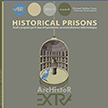
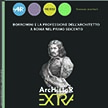
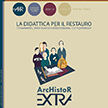

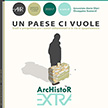
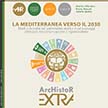
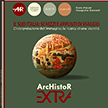
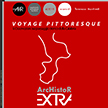
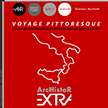
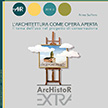
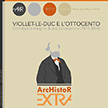

_2.jpg)



